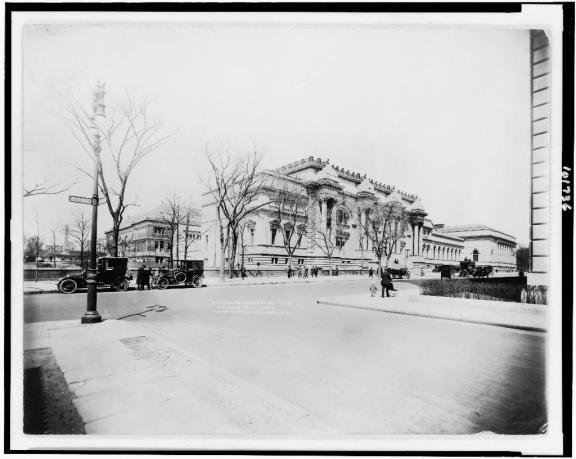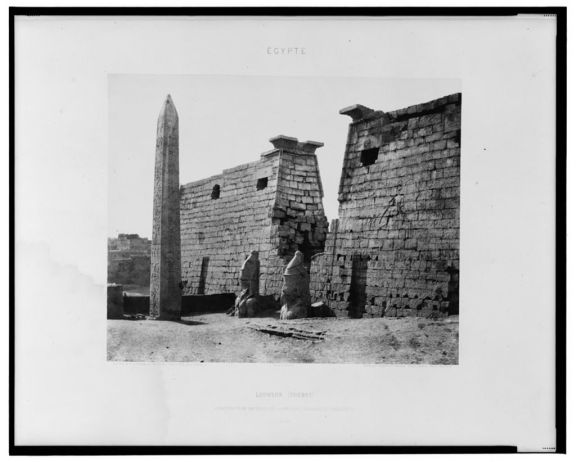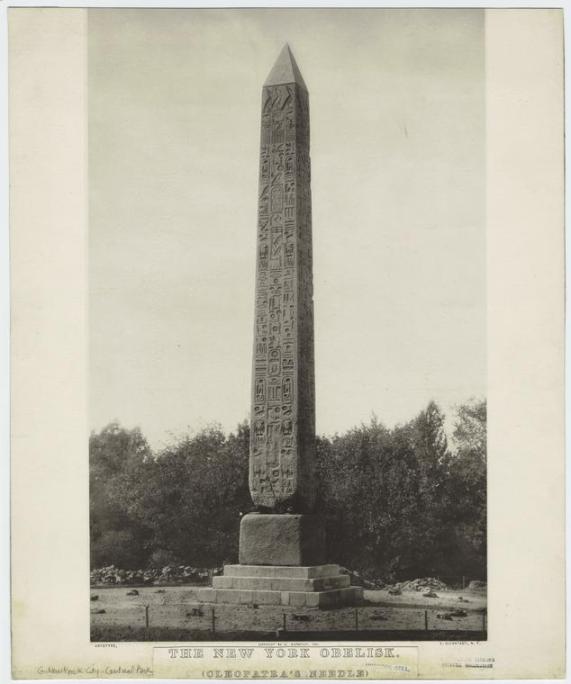New York was early beset with a complex of inferiority to the older and grander cities of the world. No matter how large it grew or how tall it built, New York would always be the younger, more rough-and-tumble brother to refined London and Paris. So when, in the mid-19th century, each of those European metropolises acquired genuine Egyptian obelisks to adorn their public squares and entertain their citizens, New York set about acquiring one of their own.

Muhammad Ali Pasha, ruler of Egypt 1805-1848, founded the dynasty which would control Egypt until its revolution in 1952
(Bibliotheca Alexandrina)
The tale goes back to 1829, when the Ottoman viceroy of Egypt, Muhammad Ali Pasha, gifted the two 3,300-year-old obelisks flanking the entrance to Luxor Temple to France. The first obelisk arrived in Paris in 1833 and three years later, King Louis-Philippe had it erected in the center of Place de la Concorde. The second obelisk would sit in port at Alexandria until 1990, when French President Francois Mitterrand relinquished all claim to it, and today it sits alone at the entrance to Luxor Temple.
Muahammad Ali Pasha had actually granted an obelisk to England more than a decade prior to France, but it took them a bit longer to retrieve it due to their government’s refusal to fund its transportation. Having been offered to England in 1819, the obelisk sat in Alexandria until 1877, when funds were put forth to sponsor ships to carry it to London. The barge carrying the obelisk was hit by a tremendous storm in the Bay of Biscay and was abandoned and considered lost. But a Spanish trawler came across it and towed it into port for repairs, after which it was reclaimed by England and carried to London, where it was finally erected on the bank of the Thames in 1878.
In 1869, it was reported that the United States had secured their own obelisk, to the scoffing of their more noble counterparts in Europe, in exchange for increased trade with Egypt. Based on this report, the New York Parks Department began a fundraising project to secure the financing for the obelisk’s transportation from Alexandria, and railroad tycoon William H. Vanderbilt offered to sponsor the entire endeavor, putting up $100,000 of his own money for the project.
But in 1877, when letters were sent by the U.S. State Department, formally accepting the obelisk, it was learned that the story had been false. Egypt had never actually granted an obelisk to the United States. Embarrassed, the U.S. Consul General to Cairo wrote letters to the Viceroy, requesting an obelisk for New York City. After 2 months of deliberation, the request was granted, and it was arranged for New York to receive the remaining twin to London’s obelisk.
The 220-ton, 68-foot-tall monolith was removed from its pedestal and loaded onto the cargo steamer Dessoug on June 12, 1880. Just over 5 weeks later, it arrived in New York, and the obelisk was loaded onto a wagon, which was hauled by a team of 32 horses from the Hudson River to its new home on Greywacke Knoll, just across the driveway from the newly-constructed Metropolitan Museum of Art in Central Park.
New York’s obelisk, however, never enjoyed the prestige-of-place afforded by London’s or Paris’s. As the Metropolitan Museum grew and expanded, the obelisk was obscured from view to all but those who specifically walk by it in Central Park. Celebrated as it was in its day as a symbol of New York’s (and America’s) equal standing with the Old World powers, it has largely been forgotten over the past century.

The Metropolitan Museum’s new facade facing 5th Avenue in 1914. The obelisk can be seen in the distance to the left of the building. A south wing to match the new north one pictured here would soon completely hide the obelisk from street view.
(Library of Congress)
The obelisk has suffered irreparable damage over its millennia of travels and travails. It sustained extensive damage when it was knocked over and burned by raiding Persians in 525 BCE. It sat, partially submerged in saltwater, for roughly 500 years before the Romans salvaged it and re-erected it in Alexandria in 12 BCE. There it stood until its 19th-century transportation to New York City: a collision of the world’s oldest and youngest civilizations. In the late 19th century, in a restoration effort gone horribly wrong, more than 800 pounds of flaking stone was chipped off of the obelisk, destroying a large percentage of its surviving hieroglyphs.
In 2011, famed Egyptian archaeologist Zahi Hawass wrote a letter to the president of the Central Park Conservancy and to Mayor Bloomberg, urging them to quickly take action to combat further erosion and destruction of this irreplaceable artifact. He has threatened to take action so far as to bring the obelisk back to Egypt for proper care. It remains to be seen what the city plans to do. In fact, cries for its return to Egypt for improved care have rung out almost since the day of its arrival in this country, and yet here it has remained.
Representatives from Central Park and the Metropolitan Museum insist that the obelisk had already sustained most of its wear before its arrival in New York City, and it stands today little-changed from its appearance when it was formally dedicated to the city in 1881. It is likely that this relic of the ancient world will continue to hold silent court on its grassy hill, surrounded by the unimaginable modernity of glass and steel that is New York.
Built in Heliopolis in 1450 BCE, the obelisk is the oldest man-made object in New York City, but is forgotten by most. In a city full of statues and monuments, who would guess that a weathered, out-of-the-way obelisk was once gazed upon by Ramesses II?








I think I am in love. Thank you for your posts. They will keep me company on my procrastinating nights…